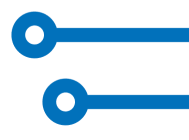Rulers and presidents, municipals and leaders
How the heads of state hit the history of their countries

In modern democratic systems, all citizens have the same rights and are equal before the law. Yet even an individual as the head of executive power can fundamentally influence the lives of people in his country in a democracy.
In the past - in times of empire and monarchy - that was even more obvious. Authoritative rulers and capable democratic leaders also, often become a symbol for a given period in state history. There are several interesting examples available in the Timixi chronology timeline system. But why is it a good idea to present it just on the timeline? - Best to show it on a few characteristic examples.
An overview of the presidents illustrates the development of the state order in France. From the first Prince-President Louis Napoleon (who soon managed to declare himself emperor again) through Charles de Gaulle (who agreed with his entry to the head of state only under a condition of constitutional changes) to the current Emmanuel Macron (25th President of the France).
Post-war Germany did not entrust the largest share of executive power to the President, but the Federal Chancellor. The first Chancellor in modern history, Konrad Adenauer, gained great respect for the restored office.
Many prominent men have entered the United States history at the head of the presidency. On the timeline, we can also track the number of their mandates, or alternation in position according to a political party membership.
our tip The timeline of rulers and presidents will enhance the overview of data related to the topic.
Timelines users have the perfect opportunity to directly compare themes on two selected timelines at once. List of official contacts of Queen Elizabeth II with the US presidents, however, brings a visualization of the meetings of the rulers of both countries on a single timeline.
The World War I in Europe clearly separates the age of monarchies from the new era of the republics. The collapse of the traditional effort to create power connections by means of ancestral royal unions can be brought closer to the students when interpreted on thematic timeline.
As the head of the Catholic Church, the Pope had a great power in the past or he possessed large territories. Interesting views can be brought by a timeline when comparing the Popes of the Renaissance to the rule of the popes of modern times. The pitfalls of promoting church power at the time are highlighted by the view on the timeline of non-legal popes.
Don’t let your audience or students guess and hunt for time relations in spreadsheets. Try to explore the context together clearly on the timeline. You can get inspiration from our public library.
Published: 04/07/2019
ver 1.7.6 en
